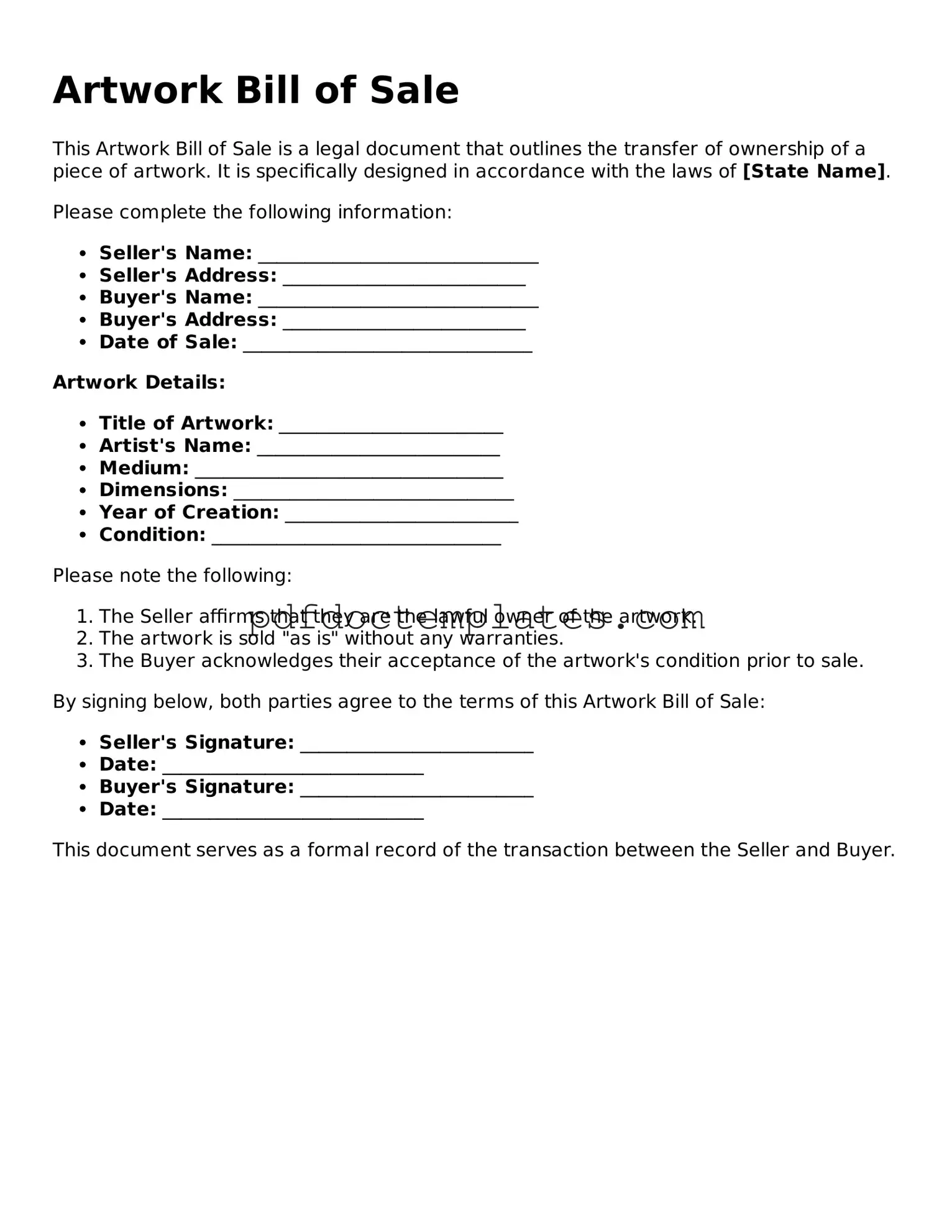Artwork Bill of Sale
This Artwork Bill of Sale is a legal document that outlines the transfer of ownership of a piece of artwork. It is specifically designed in accordance with the laws of [State Name].
Please complete the following information:
- Seller's Name: ______________________________
- Seller's Address: __________________________
- Buyer's Name: ______________________________
- Buyer's Address: __________________________
- Date of Sale: _______________________________
Artwork Details:
- Title of Artwork: ________________________
- Artist's Name: __________________________
- Medium: _________________________________
- Dimensions: ______________________________
- Year of Creation: _________________________
- Condition: _______________________________
Please note the following:
- The Seller affirms that they are the lawful owner of the artwork.
- The artwork is sold "as is" without any warranties.
- The Buyer acknowledges their acceptance of the artwork's condition prior to sale.
By signing below, both parties agree to the terms of this Artwork Bill of Sale:
- Seller's Signature: _________________________
- Date: ____________________________
- Buyer's Signature: _________________________
- Date: ____________________________
This document serves as a formal record of the transaction between the Seller and Buyer.
